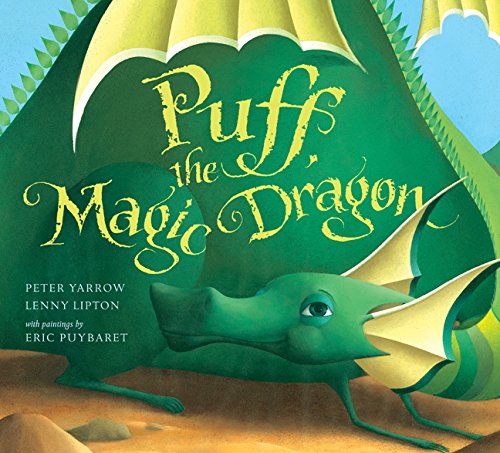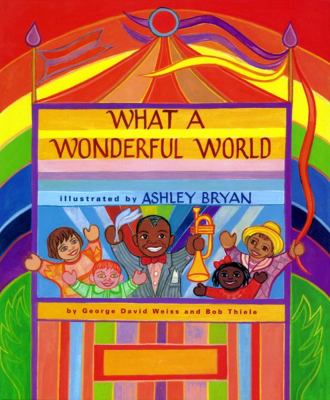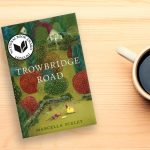I love instant lesson plans–especially those that are joyous! Books that are songs (or songs that are books) offer built-in activities and interactive fun. Here’s a smattering of easy titles (some old, some new) that shall have you singing and dancing in no time. These are great storytime options; students leave the library singing! If you are able, digitize and display the text, and turn each page as you read/sing using your interactive whiteboard. Point to the text as you sing so that students may visually track the words.
Pairing both print and digital versions of song-stories is also wonderful–-try sharing both formats simultaneously and recruit student volunteers to have them assist with turning pages and pointing to the text as it is read aloud. Offer accompaniment (keyboard, tambourine, guitar, triangle, Native American flute, kazoo, bongos, etc.) for multi-sensory learning. You or student volunteers (impromptu class bands) may play along with each story! Percussion instruments work particularly well for students to play along.
Although the items featured in this blog are for the most part actual songs, you may also interject your own songs to stories that are not song lyrics per se. Music still creates an element of surprise and fun, even if the story is not a song. (I had fun creating my own songs for stories, and students may create their own songs, too.)
Take plenty of photos during the year and videotape class activities to share at parent-teacher conferences or at end-of-year celebrations. You may also designate students to help with class photography and videography throughout the year.
Although great for the younger set, these stories may also be adapted and used with older audiences for more in-depth discussions, projects, research, or even just brain breaks. The suggestions that follow are just a few ideas; feel free to add your own. Unleash your creativity, bolster learning, and have fun!
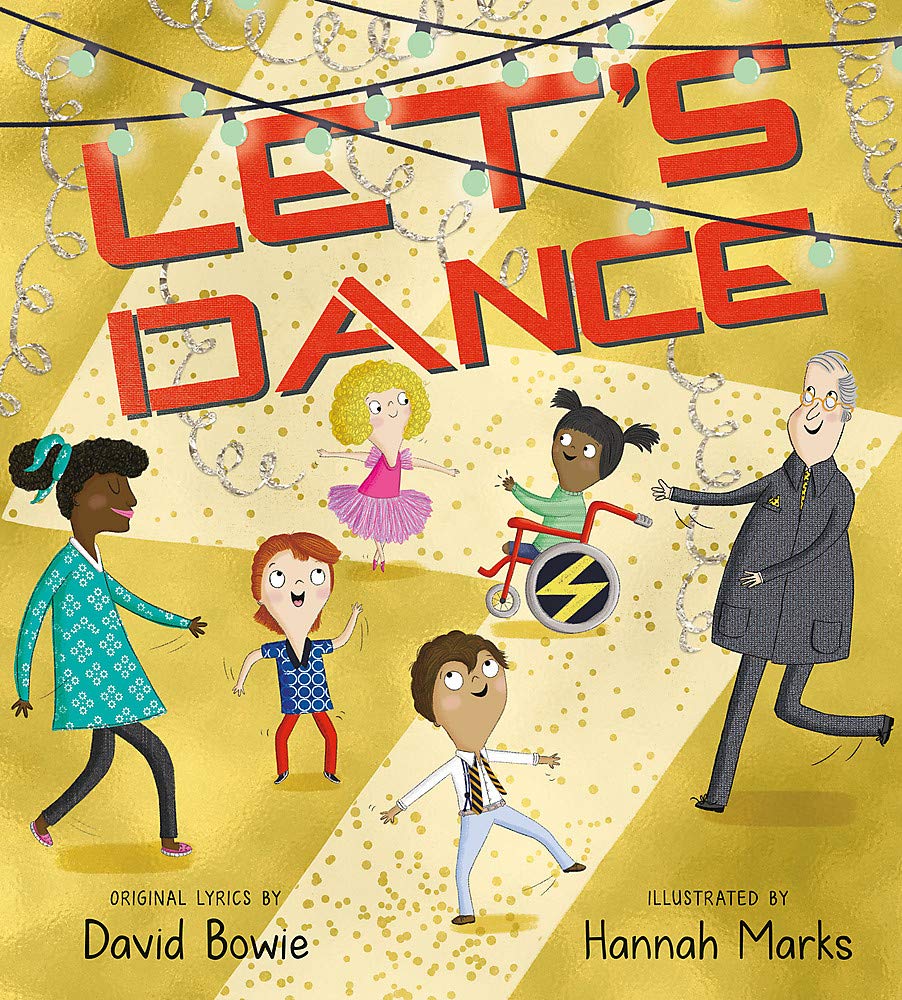
Create the mood for the story by dimming the overhead lights, and use 5-6 flashlights covered with colored gels (and some with simple white light) that students shine on the “stage” or use a small disco ball for special effect lighting.
Wear your red shoes while reading the story aloud. Play the song and point to each word of the lyrics in the text, or alternately, sing the song yourself. If possible, also display the text on the interactive whiteboard, and have a student volunteer point to each word as it is read. (I liked to use both the interactive whiteboard and a physical book when feasible.)
Activity
Student re-enactments with props. After the initial read-aloud, re-read the story and have 4-5 students re-enact the story. Allow students to use props such as red sneakers, boas, tutus, go-go boots, etc. Have all students sing the story together during the re-enactment.
Activity
Create a “karaoke” version of the story to sing along, or use a karaoke machine with a microphone and have students take turns performing the song. Even just offering students a toy or real microphone for feature solos works well–ask for volunteer soloists or duet pairs.
Discussion
What types of dancing are there?
Why do you think the shoes are red?
What do the shoes do?
Of what importance is art/dancing/music to people?
Links
https://www.youtube.com/watch?v=ktdQiODWt84
https://www.youtube.com/watch?v=viXFHDQkzuM
https://www.youtube.com/watch?v=KYpoYh-MY7w
This classic tale of imagination, loss, change, and grief may be read at “face value” for younger students, or as an allegory for more mature students.
Sing the story and play along on the guitar, with two students holding the hardcover print copy and turning the pages. Play the song and point to each word of the lyrics in the text. If possible, also display the text on the interactive whiteboard, and have a student volunteer point to each word as it is read. (I liked to use both the interactive whiteboard and a physical book when feasible.)
Listen to the CD with the Peter Yarrow version of the song and listen/read the story again.
Activity
Have students select and illustrate their own page from the story or draw their own dragon. It is useful to have several copies of the book available so that students may reference it at a group table. Use drawing books and nonfiction books as inspiration, and project images from the story on the interactive whiteboard. Have each student share each story page created with the group. For more advanced students, have each student write a 2-4 sentence description of his or her dragon.
Activity
Create a dragon as a collective group or classroom project using large leaf collection bags and fabric, paper, and recycled scraps. When finished, do a “dragon parade” around the library or create a display.
Activity
Create improvised dragon performances by dividing students into 3-5 groups, with each group creating 1 dragon. Each group puts their hands on the hips of the person in front of them to create a conga line and the dragon moves throughout the library. The person at the head of the line is the head of the dragon and leads the group, the person at the back of the line is the tail. Play the song while the dragon moves about the library. Videotape the dragon performances for future viewing or end-of-year presentations.
Activity
Do Show-and-Tell with a favorite stuffed animal or toy. Ask each student to explain how he or she came to love it and what it means to him/her.
Activity
Create dragons with LEGOs. As an extension for older students, use dragon LEGO creations to create animated shorts using Animoto or other video software.
Discussion (Large or Small Group)
What is your favorite toy or stuffed animal? Who gave it to you? What does it mean to you?
What would you do if something you loved went away?
What types of “dragons” do the characters face? What dragons do we face in real life?
How did Jackie change? What lessons did Jackie learn?
How does imagination play a part in the story? How important is imagination?
How does grief play a role in this story?
Links
https://www.youtube.com/watch?v=IlRrb5LOnM4
https://www.youtube.com/watch?v=VLC_Bo3aotM
https://www.youtube.com/watch?v=z15pxWUXvLY
https://www.youtube.com/watch?v=mTfO0VKKxSM
This is a great read-aloud for giving thanks and the Thanksgiving season, and pairs nicely with Louis Armstrong’s classic song “What A Wonderful World.” Sharing this book becomes a sing-along.
Create or access a digital version of the text. Sing-along with the story, while displaying lyrics on the interactive whiteboard. Play the song and point to each word of the lyrics in the text. If possible, also display the text on the interactive whiteboard, and have a student volunteer point to each word as it is read.
Review the lyrics with students, and sing the story again as a class. If desired, additional video versions of the song may be shared and compared.
Activity
Form a circle, and go around the circle, with each person sharing something that he or she is thankful for and why.
Activity
Create books with the lyrics and include blanks in the lyrics to personalize the text. Illustrate the pages in the story to make the book your own, and share the stories with the class.
Example:
I see _______, __________ too.
I see them ____, for me and you.
And I think to myself, what a wonderful world.
Activity
Create a collage or slideshow using old magazine photos (print) or digital tools (PicCollage, Picasa, Google Photos, etc.) of things that you think are wonderful. Share with the class. If feasible, underscore these with the song to create personalized wonderful world slideshows or collages.
Activity
Create popsicle puppets of the characters in the story, and if feasible, use a puppet stage. (Stages may be ordered from Demco or other vendors, or as a cost-effective option, students could create their own puppet stages from cardboard boxes.) Students may use their own illustrations or you may wish to use stencil outlines of characters. Divide the class into 2 groups, and have each group perform the story with the puppets, with a person in each group assigned a character, and all persons singing.
Activity
Assign students a gratitude thank-you note. Ask each student to create a thank-you note to give to someone in their life to express something that he or she is grateful for. Ask students to report back to the class the reaction of the recipient.
Discussion
What makes something “wonderful”?
What are some things/people/events/places that you are thankful for? Name 3 things or people from your home, school, or community that you think are wonderful.
What is an optimist? Pessimist?
Links
https://www.youtube.com/watch?v=rBrd_3VMC3c
https://www.youtube.com/watch?v=kkRV6DD8t94
https://www.youtube.com/watch?v=21LGv8Cf0us
https://vimeo.com/135669200

Sing/share the song and lyrics without the book. You may sing acapella, play an instrument such as a piano or guitar, or play the audio-only. Have students close their eyes and just listen.
Sing/share the song again while looking at the illustrations from the story. How did your mental pictures differ from the illustrations added? How important are illustrations to a story?
Activity
Sing/share the song in Spanish.
Activity
In groups or individually, have students create a cartoon storyboard using the lyrics from the song. For an ambitious project, or older students, have students animate their illustrations using Animoto or other video tools.
Activity
Assign students one “peace action” to perform in the day–an act of kindness, community service, a small gesture of gratitude, etc. Ask students to journal (1 page or a few sentences) or blog about the experience and to report back to the class about the service action, its result, and how it felt.
Activity
Teach the sign language of the lyrics and have the class perform the song in sign language. (Reference Glee video clip below.)
Activity (For Older Students)
Research the origins of the song and how it reflected the 1960s counterculture. Have students report their findings in class or by creating video clips to be shared on a digital platform.
Activity
Have students create an Imagine graphic sign. Use calligraphy, special fonts, or background images with the Imagine lyrics in the foreground.
Activity
Have students create an infographic with the lyrics to the song as a background. Include on the foreground statistics and cite sources around current topics such as overpopulation, homelessness, gun control, immigration, digital divide, etc.
Links
https://www.youtube.com/watch?v=JTa90PKV5UM
https://www.youtube.com/watch?v=ALSSRkpuJiA
https://www.youtube.com/watch?v=EjmHBCNRInw
https://www.youtube.com/watch?v=L6svOHFSAH8
https://www.youtube.com/watch?v=mfHb-avHjO0
https://www.youtube.com/watch?v=L7IP4UlXvG8
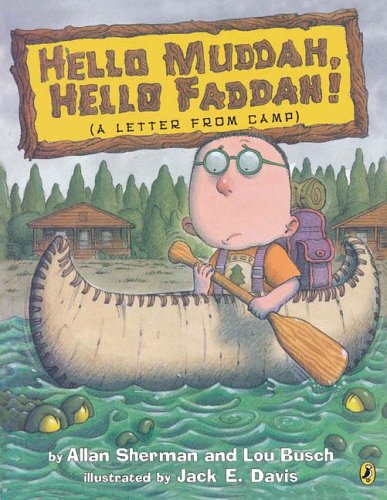 Share the book as the song plays simultaneously, with either print or digital versions (or both).
Share the book as the song plays simultaneously, with either print or digital versions (or both).
Activity
Reread the book, and ask students to sing an echo-response of the lyrics in song.
Example:
Song Response
Hello muddah…. Hello muddah
Hello faddah…. Hello faddah
Activity
In small groups, plan and create an improvisational mime performance to the song, acting out portions of the books.
Activity
Play charades with students acting out certain situations from the book.
Activity
Write a letter from camp to your own parents. Using the syntax and format from the story, create at least 3 situations that happened at camp that were not mentioned in the story. Sing the updated versions to the class.
Activity
Divide into small groups, and assign 1-2 pages from the book to illustrate in a graphic novel format using comic book bubbles for dialogue.
Discussion
What scenarios were created during the story? List.
Why does the main character keep detailing outrageous situations at camp?
What other dangers not mentioned in the story could the character experience?
What causes the main character’s change of heart at the end of the story?
What do you think is true in the story? What do you think may not be true in the story?
Links
https://www.youtube.com/watch?v=t1wFQRKBa6Y
https://www.youtube.com/watch?v=63HtHV4eKW0
https://www.youtube.com/watch?v=4yFTOvO0utY
https://www.youtube.com/watch?v=JN4nP5pxnTg
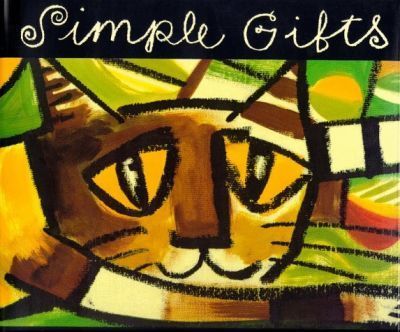 Play the melody on Native American flute to introduce the story. Read aloud. Play the melody again at the end of the story to conclude the story.
Play the melody on Native American flute to introduce the story. Read aloud. Play the melody again at the end of the story to conclude the story.
Activity
If available, have students play the melody on kazoos. (Obviously they keep the kazoos.)
Activity
Divide the class into small groups and ask each group to view a different musical version of Simple Gifts using the links below or other audio sources. What are their reactions? Favorites? Ask each group report back to the class to explain how each version changes their reactions slightly. Ask the class to vote on a favorite version and graph the results.
Activity
Create a basic Simple Gifts dance and teach it to students using the melody of the song.
Example:
Step 1- step right, touch left, step left, touch right step 1-2-3 at same time clap. (cts. 1-7)
Step 2- circle around your partner (with right arm above head to meet partner’s right arm) – 4 walks, bow to partner and straighten
Step 3- (link elbows with your partner) – grapevine right, (step side, step back, step side, step tap), grapevine left.
Step 4- Step right, jazz square step right, cross left, step back right, step together-shake hands right to right with partner.
Activity
Research the Shaker religion using reference materials, nonfiction print, and internet searches. Why would they create this hymn?
Activity
Create an individual or class word cloud that lists ideas for other types of simple gifts.
Discussion
What do you think is meant by the phrase “simple gifts”? What do you consider to be a simple gift?
Raschka chooses animals to illustrate his story. What animals were included? What 3 animals were not included but (you believe) should have been?
What is the lesson suggested by the song?
What surprised you about this story?
Links
https://www.youtube.com/watch?v=baNueuDCue0
https://www.youtube.com/watch?v=jzF_y039slk
https://www.youtube.com/watch?v=dM1_i-xMB7U
https://www.youtube.com/watch?v=FMtCh0VuoKg
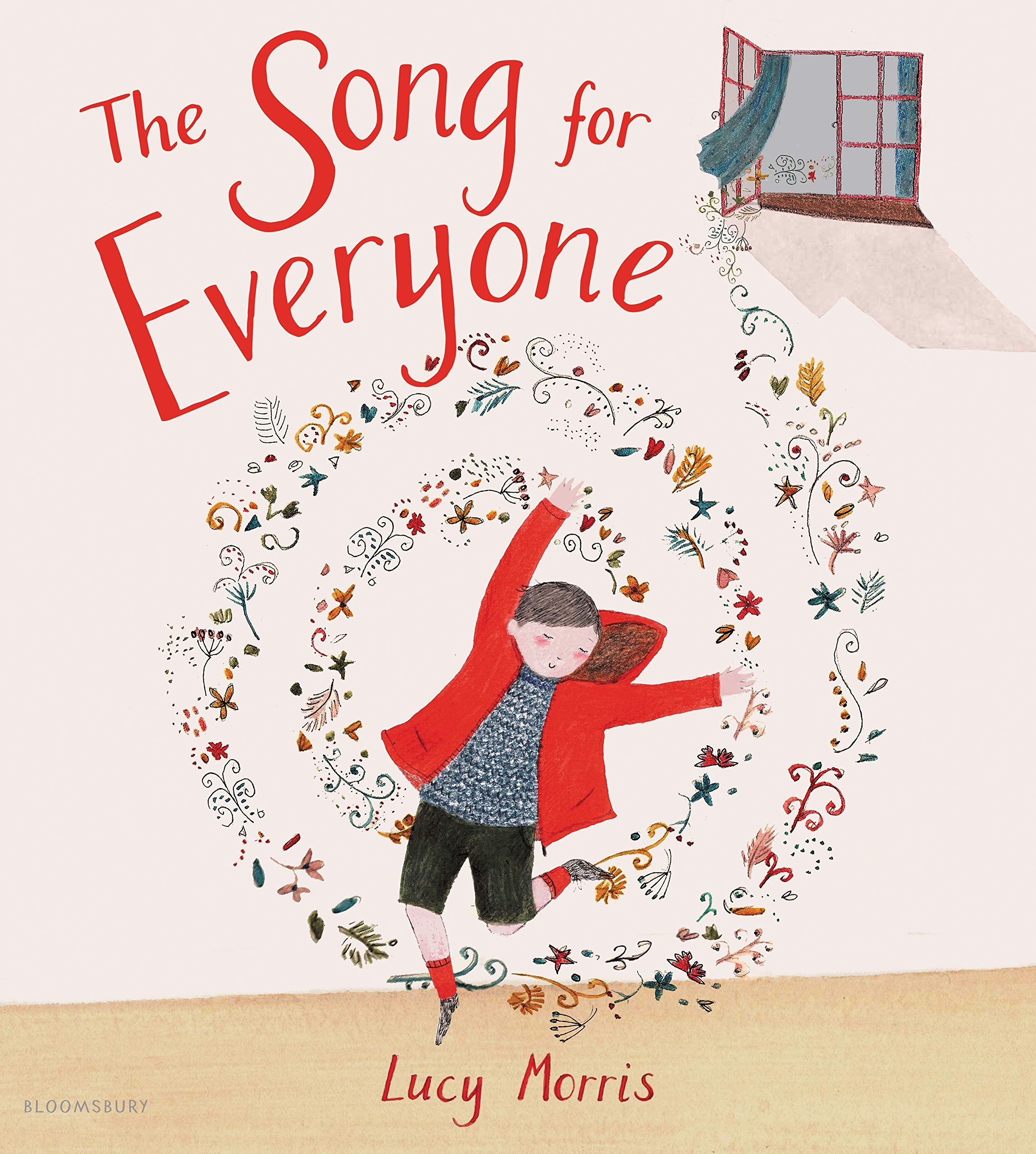 Share the story aloud, then create the melody that the townspeople hear (either as a collective group or in small groups). Reread the story and sing (or record and play) the melody that was heard, inserting it into the retelling. Students may sing or use available instruments to create the melody. Suggested instruments include keyboard and xylophone.
Share the story aloud, then create the melody that the townspeople hear (either as a collective group or in small groups). Reread the story and sing (or record and play) the melody that was heard, inserting it into the retelling. Students may sing or use available instruments to create the melody. Suggested instruments include keyboard and xylophone.
Activity
Play excerpts of 4-5 different melodies. Vote on the melody as a class that best “matches” the story and insert the favorite melody into the retelling.
Activity
Play different types of musical clips, and ask students to write down the type of story that the genre of music would underscore–realistic, horror/scary, romance, etc. Share student results in class.
Activity
Prepare blank bookmarks and ask students to illustrate their bookmark and mark the place in the story that resonated for them. Ask students to share their place-markers with the group and explain the personal connections.
Activity
Create a journal or blog response explaining how 1 small act made a difference in your life. Plan and execute 1 small act and report back the results.
Discussion
How does music affect your moods?
What current events may pertain to this story?
What types of music bring you joy?
How important is art to the human experience?
How is your life like a melody?
What is one way that you may make a difference in the lives of others?
Links
https://www.youtube.com/watch?v=nNxhSe4TiOQ
https://www.youtube.com/watch?v=mkbDJda24xI
https://www.youtube.com/watch?v=cxLbmnvMWM0

